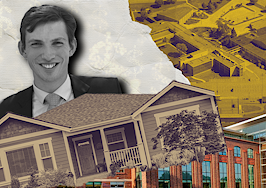New buyers and real estate investors may initially feel overwhelmed by the prospect of land investment, but it doesn’t have to be an intimidating journey. Throughout my career, I’ve immersed myself in the intricacies of land investment in Las Vegas — a city recognized for its dynamic growth and rapid transformation.
With this knowledge, I have gathered essential insights to help you confidently venture into the expansive world of land investment throughout the United States.
Exploring the types of land
It’s crucial to acknowledge that not all land is created equal; each category serves a unique purpose, catering to specific investors and developers. To start, here’s an overview of the different types of land:
- Residential land: Typically purchased with the hopes of selling to a homebuilder in the future
- Commercial land: Sought after by developers aiming to establish businesses
- Multifamily land: Geared towards creating housing for multiple families
- Industrial land: Suited for manufacturing and industrial activities
- Office land: Intended for office space development
Understanding the purpose of each land type is the first step toward making informed investment and purchasing decisions.
Buying land
There are many vital factors to consider when it comes to buying land. However, in my experience, the zoning and land use plans are the two most critical ones.
According to the National Association of Realtors, zoning is what the property is designated to be used for. For example, some areas may be zoned for residential use, while others may be designated for commercial or industrial purposes.
Land use plan is the potential future of what the property can be used for. By examining these plans, investors gain valuable insights into the direction in which an area is headed.
Factors influencing land prices
To execute a successful land investment, there are several elements to take into consideration:
Development status
A significant component is the development status of a land parcel. To avoid complications or unforeseen price increases, investors seek properties with minimal development challenges, such as drainage issues, washes dissecting through the land and high-tension power lines running through the middle.
Location and traffic
Being in an A+ location can significantly enhance the value and potential uses of the land. The location, daily amount of traffic passing by, and foot traffic drive the price and bring more potential investors.
Raw land vs. improved land
Raw land is untouched and lacks installed utilities like water, power, gas and sewage. Improved land has utilities stubbed through the property, meaning it has water, power, gas and sewage. It has also completed off-site improvements such as curb, gutter, sidewalk and streetlights.
Loans
Buying land is generally more challenging than buying a house. Undeveloped land isn’t an instant primary residence for the buyer, making it riskier for lenders. Most lenders require a 20 percent to 50 percent down payment and higher interest rates for raw-land loans. This makes land investment more viable for individuals with substantial liquid assets willing to commit for an indeterminate amount of time.
Common misconceptions
One of the main misconceptions I see pertains to the availability of land. Speaking specifically of Nevada, a small percentage of the land is privately owned, and the remaining 48 million acres of land belong to the Bureau of Land Management (BLM). So, while driving around the Vegas Valley, you might see vast expanses of open desert when in actuality, very little is available for purchase.
Remember that education is your greatest ally as you embark on this journey. Whether you’re eyeing residential, commercial or industrial plots, knowing the lay of the land will empower you to make informed decisions and navigate confidently.
If you’re considering land purchase, here’s one vital piece of advice: Don’t wait to buy land; buy land and then wait for its potential to flourish.
Poujan Sadri is a broker at huntington & ellis, A Real Estate Agency. He specializes in raw land and multifamily housing.













